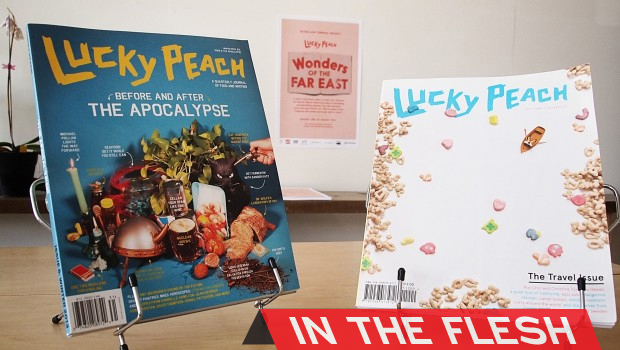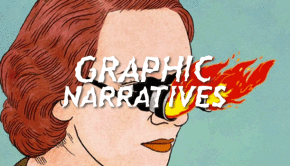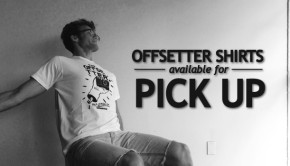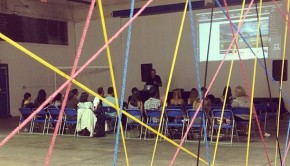How the Lucky Peach Sausage is Made
To anybody who has read it, this goes without saying: The quarterly food journal Lucky Peach is a respite in today’s exhausting surfeit of food writing. Its approach to the culinary is far from redundant, and totally mentally nourishing.
Founded in 2011 when chef David Chang, of Momofuku prestige, brainstormed with a McSweeney’s editor named Chris Ying over a new media project about food, Lucky Peach has since established itself as the rare sort of new/anti-magazine that succeeds, aspirational to today’s generation of niche, independent publications. It’s a lovechild between a chef and an editor and the black sheep of the food magazine industry.
In a way, Lucky Peach (which, translated into Japanese, is momofuku) is what a lot of start-up publications wish they could be, or at least wish they’d thought up themselves. It started as a food section in a newspaper. To understand its origins, you’ll have to go back to the San Franciscan 320-page mammoth one-off newspaper project, Panorama, where Chang and the writer Peter Meehan collaborated on a 16-page food section. That paper was published by McSweeney’s.
Considering the weather for print these days, the thing’s a success: So far, it’s made it through seven issues, with a circulation growing into the 100,000s and climbing. If Lucky Peach isn’t saving printed media, it’s certainly giving it one last trip around the buffet table.
Certainly, the pedigree and connections provided by Chang’s social circles, Ying’s McSweeney’s life, and Meehan’s worldwide reach helps. It dips from a deep pool of talent: Anthony Bourdain, Ted Nugent, Michael Pollan, John Birdsall (editor of CHOW.com), and Todd Kliman (of the Washingtonian) are a few of the contributors of past issues.
Pollan wrote an essay about the end times for the Apocalypse Issue, and Bourdain wrote a film essay in the Travel Issue about why movies with rivers as the main character make for the greatest travel films of all time. But what is it like to edit the writings of such strong voices and presumably power egos? “I learned to be an editor working at McSweeney’s, where we always made up for our lack of resources with a surplus of editorial attention,” says Ying, who is Peach‘s editor in chief. “That is to say, I’m a really hands-on editor. I’m not shy about making big suggestions, and going back and forth with an author. That holds for the big-name people, too. Fortunately, a lot of the big names have been doing this for a long time and send in pretty clean drafts. In any case, the overwhelming majority of our contributors are effusively happy and thankful for the edits we give them. I think many of them are used to getting cursory marks back on things they submit.”
Creative Director Walter Green deals with a lot of expressive personalities: freelance illustrators, an editorial staff, set designers, photographers, chefs. He says working with illustrators and photographers is his favorite part of the job. “What’s thrilling about it is, I start each article with a vague idea in my mind of how it’ll end up—I think, okay the illustrator will draw this specific thing, and I’ll just design it like this, and so on—and then the illustrators bring their own creative vision and thought process to it, and make it a completely different (and way better) thing than I could have imagined.”
It’s a small editorial staff (read: Ying, Rachel Khong, and Chang, and Meehan shows up a lot) and art department that puts out a considerably meaty issue every three months in a different theme. “The relationship [between the departments] is extremely close. Most of the editorial team are close enough that they could give the art department (me) a wedgie if they wanted to,” Green says.
“Everyone’s working on Lucky Peach because it’s a magazine that allows them to do what they want creatively,” says Ying. “The artists read an article and give us their best representative work—the same goes for Walter and his designs. On the flip side, most of the time Peter will have art ideas for articles he’s assigning, but he’s also open to suggestion.”
“I think we’re all kind of on the same wavelength most of the time about what we want the magazine to look like,” says Green. “Also, I’m lucky to have editors that have interested/open tastes in art and illustration and design. So, they’re not too freaked out at any weird designs or art that I throw at them, and usually they suggest weird artists and photographers that they like, as well.”
The reason we’re writing about all of this—not that they don’t deserve to be written about—is that Ying and Green will be in Honolulu this weekend to show how this sausage is made at several events hosted by the creative collective Interisland Terminal.
It’s not surprising if you haven’t heard about Interisland Terminal; they exist on the periphery, but each member—Angelica Rabang, Michelle Carino, Ben Trevino, Sean Shodahl, Sarah Honda, Henry Mochida, Joanne Magday, and Wei Fang—is a quiet genius in their own right and, when put together, are probably one of the best connected groups in the city.
“People say that print is dead,” explains Wei Fang about why Interisland Terminal chose to bring Ying and Green here to talk. “But with Lucky Peach, we see that it’s entirely possible to bring the medium of print to a whole new level of creativity that’s relevant and that speaks in the voice of our generation. The seamless and irreverent fusion of art, food, and cultural critique is what makes it one of our favorite publications at R/D.”
Trevino has posted that R/D sells more Lucky Peach issues than any other item in their bookshop, but how does it stand out from the other magazines of the bookstore’s highly curated selection? Complex? Too superficial. Monocle? Too smug, and way too unaware of it. The newer Fool? Okay, it discusses food, but with much less panache and attitude than the thing Ying, Green, and company put together four times a year. Lucky Peach strikes the golden ratio of heft, humor, unpretentious intellect, and deprecating self-awareness.
“I do think we started out with the intention of being a little rougher around the edges than most magazines,” Green says. “I think I remember Chris even saying it before we started the design of the first issue, mostly because we knew that we’d never be able to be as fancy as a lot of other publications or afford a lot of the things they do. So we kind of embraced our limitations and tried to turn them into positives.”
“Walter’s spot on,” says Ying. “I don’t think of our aesthetic or editorial directive as being anti-establishment. I think established magazines are good at what they do—why would we try to compete? We don’t have the resources. The MO of the magazine has only ever been to bring in writers, illustrators, and photographers we admire, regardless of their backgrounds or interest in food. There’s a lot of great stuff to be found in the spaces between different interests. In fact, that’s where we draw most of the content in the magazine.”
The fact that they’ve made it through seven issues (with only a nominal sticker price hike and the inclusion of the occasional full page ad) is a rarity. But Ying says, “We’ve never been closed off to ads. We just didn’t think to include them in the beginning; honestly, we didn’t think through all that much in the beginning. That was the magic of the relationship between two companies like McSweeney’s and Momofuku—we were so excited to make this thing, nobody let the details bog us down. After the first couple issues we realized that people wanted us to keep going. In order to keep going, we needed to avoid going out of business. Hence the ads and the small price hike.”
Their process goes something like this: Ying and Meehan will bump heads over what the theme is going to be, sometimes with Chang’s input, sometimes without. “Peter and I are like brothers—we bicker and fight and then we hug and make a magazine,” Ying says. “Dave’s always been great about giving us free reign with our ideas—he contributes editorially, and is the best possible sounding board for ideas about restaurants, cooking, food, or chefs.”
At the close of one issue, they immediately start on the next, but Ying says it’s generally only as far as the idea of the theme, and maybe a couple of assignments get sent out to writers. “ I’d love to fix this system,” he says. “But for now, it’s like running an endless Iron Man competition. You finish the marathon and get on a bike and start riding uphill.”
“At the start of the issue, I usually spend a couple of days finessing the design of an article, though, as the deadline approaches, it gets kind of frantic, and it’s more like three layouts a day or something stupid,” says Green. “More and more, I’ve been thinking of each issue as its own special package that should kind of be able to stand alone, but also make sense with the look of our other issues. Usually, as the pieces start to come in I get a sense of what I want the issue to look like as a whole. The theme also kind of dictates the design—like, for our Apocalypse Issue I wanted it to be Lucky Peach‘s version of some sort of governmental emergency pamphlet. For our Travel Issue, I just tried to do my best impression of what a fancy travel magazine would look like, filtered through some kind of Lucky Peach lens.”
Ying: “We’ll make sure everyone’s happy with the theme, and that we’re all on the same page about what interests us and what doesn’t about it. We’ll bat some ideas back and forth over the phone. Some of the ideas will be really specific: I want so-and-so to write a story about panda bear diets. Some will be more vague: I think we should make sure we cover black-and-white bears. After that, we’ll talk to our managing editor and hit her up for ideas, and bounce some of ours off her. Eventually, after a few more back-and-forth sessions we’ll have the making of a run sheet. The problem is that run sheet expands and contracts with the flakiness of contributors (ourselves included), the introduction of spectacular new ideas, leads fizzling out, and the general whims of the universe. It’s really a double-edged sword. On the one hand, it’s great to be a nimble magazine that can include something at the very, very last second. On the other hand, I really hate dropping an entirely new article concept on Walter on the day we’re going to press. [...] We’re improving with each issue (more or less), and ideally moving toward a sustainable model of independent magazine publishing. As a member of the cult of indie magazines, that’s what excites me about Lucky Peach.”
The next issue, on the theme of gender, will hit O‘ahu on September 10.
Although David Chang, in this GQ piece, makes like he’s destined for failure (“I spend most of my days trying to keep my shit together,” he says. “The guys I worked for would say David Chang would be the last to succeed and have a successful restaurant. My DNA has nothing to do with success.”), the magazine, like his Momofuku restaurants, have shown an industry that there is more than one way to roast a chicken. (See other ways here.)
“I think the magazine gets more confident about what it’s trying to do and more sure of itself every issue, both on the editorial side and the visual side,” Green says. “I think that’s the goal for all of us: to make each issue better than the last, and to make the magazine worthy of keeping and reading and subscribing to.
“I always look back and feel slightly embarrassed by previous issues,” Ying admits. “On the one hand, this is an unhealthy way to live. On the other, it makes me happy to think that each successive issue is our best one yet. Everyone on this staff has made sacrifices to work on this small food quarterly. There’s much more money to be made out there. Like I said before, I drank the Kool-Aid of independent publishing a long time ago. That being said, Lucky Peach, to me, represents the best opportunity I’ve ever had to evolve a wobbly upstart publication into something that can sustain a staff of happy people producing work that they’re proud of. That’s the holy grail for us, and we’re ploughing ahead until we reach it. It’s happiness or bust.”
For more sort-of-peeks behind the scenes, if not a dependable source of inspiration, Lucky Peach’s homepage, a tumblr—lky.ph—is good for hours of scrolling through beautiful illustrations, rejected ideas, tips on how to best celebrate things like Dyngus Day, quotes—tumblr fare to be sure, but some of the best on the micro-blogging network.
And for an even more behind the scenes experience, see Ying and Green in the flesh at events this weekend at R/D in Kaka‘ako and V-Lounge. Green will talk about how he designs the issues and Ying will talk about the magazine’s evolution. V-Lounge will host an industry night on Sunday, Aug. 4 at 9:30pm, where tickets are cheaper for anybody in the service industry and entrance gets you a drink and pizza (the signature drink is something called a Bird Dog Peach Tea Cocktail!). And on Monday, Aug. 5, Chefs Aker Briceno, Lance Kosaka, Mark Noguchi, Lindsey Ozawa, and Wade Ueoka will throw down a local-style carnival food potluck at R/D at 6:30pm.
To purchase tickets to the events, here is the event brite page, and to subscribe to Lucky Peach, click here.

















